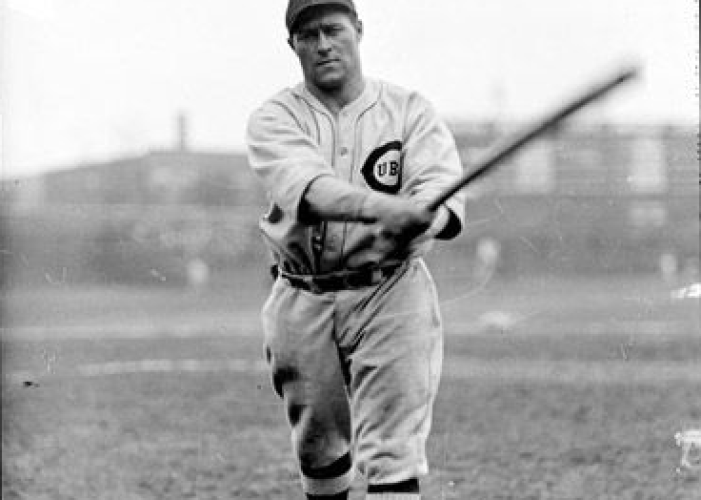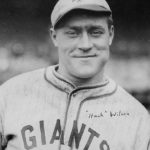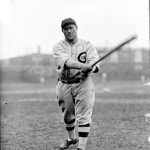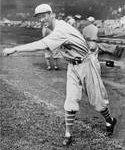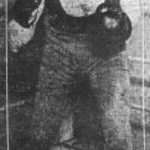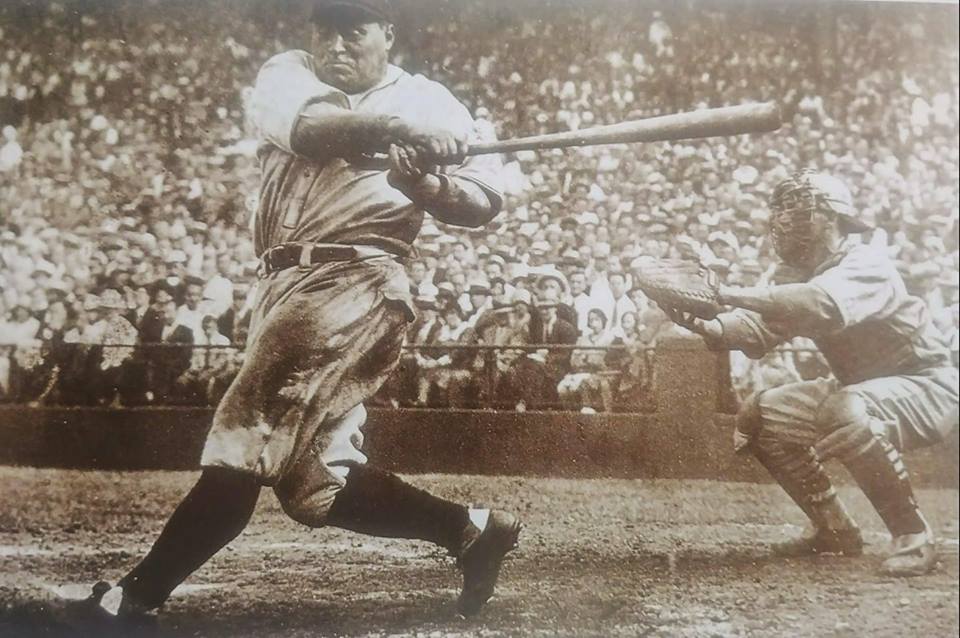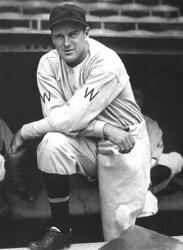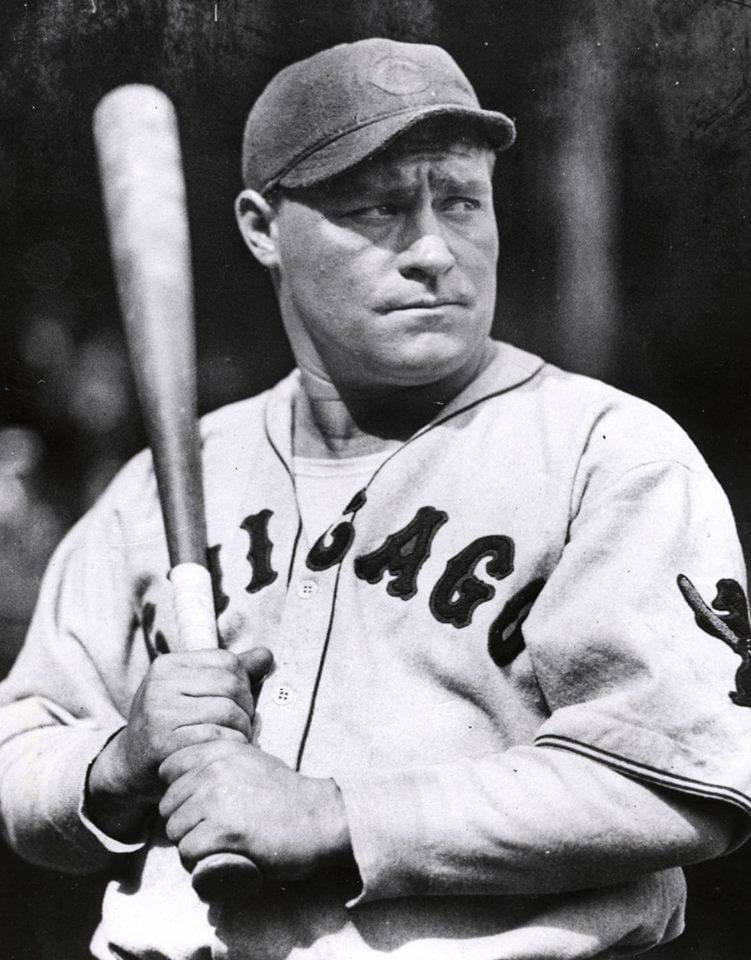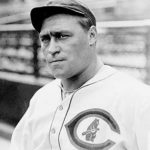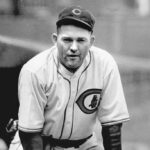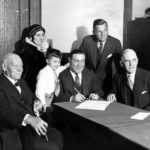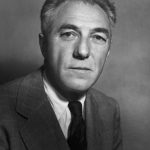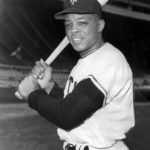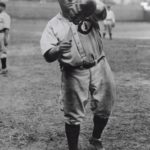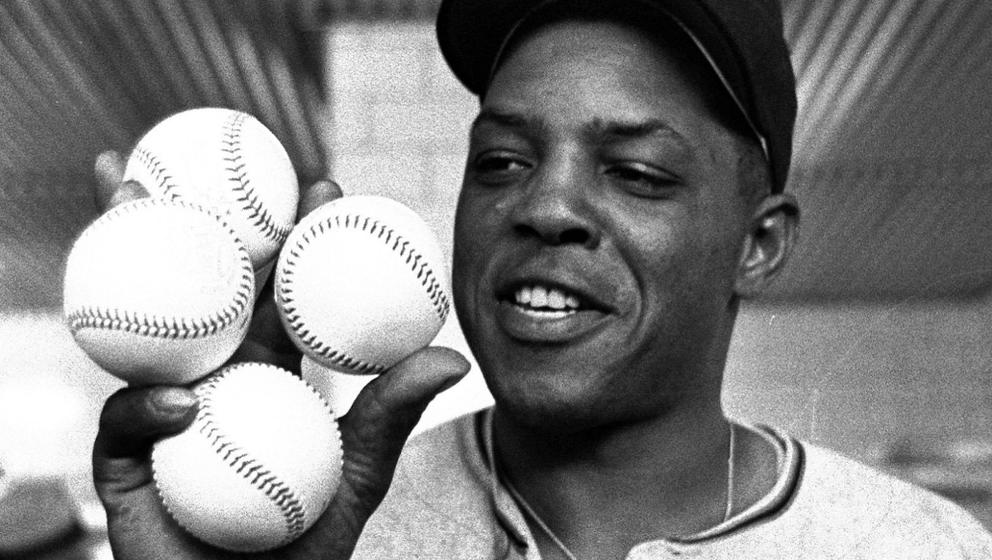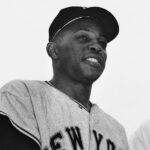Hack Wilson Essentials
Positions: Outfield
Bats: R Throws: R
Weight: 190
Born: April 26, 1900 in Ellwood City, PA USA
Died: November 23, 1948 in Baltimore, MD USA
Buried: Rosedale Cemetery, Martinsburg, WV
Debut: September 29, 1923
vs. BRO 2 AB, 0 H, 0 HR, 0 RBI, 0 SB
Last Game: August 25, 1934
vs. PIT 1 AB, 1 H, 0 HR, 2 RBI, 0 SB
Hall of Fame: Inducted as Player in 1979. (Voted by Veteran’s Committee)
View Hack Wilson’s Page at the Baseball Hall of Fame (plaque, photos, videos).
Full Name: Lewis Robert Wilson
Hack Wilson Baseball Reference Page
View Player Bio from the SABR BioProject
Nine Players Who Debuted in 1923
Lou Gehrig
Heinie Manush
Bill Terry
Hack Wilson
Willie Kamm
Ted Lyons
Moe Berg
Charley Root
Earl Whitehill
The Hack Wilson Teammate Team
C: Gabby Hartnett
1B: George Kelly
2B: Rogers Hornsby
3B: Fred Lindstrom
SS: Dick Bartell
LF: Lefty O’Doul
CF: Kiki Cuyler
RF: Ross Youngs
SP: Charlie Root
SP: Pat Malone
SP: Lon Warneke
SP: Art Nehf
RP: Dutch Leonard
M: Joe McCarthy
Notable Events and Chronology for Hack Wilson Career
Though he played as many as 140 games just five times in his brief 12-year career, Lewis “Hack” Wilson was selected by the Veterans Committee for induction to the National Baseball Hall of Fame. That honor came almost exclusively because of his record-setting 1930 season, in which he set the all-time single-season mark for RBI and blasted 56 home runs. Despite being rather small, Wilson packed a lot of punch and was very popular in every city in which he played.
Hack was, first of all, a physical phenomenon. There were 195 pounds of him on a 5’6″ frame: the height of Phil Rizzuto, only 40-45 pounds heavier. As a young man it was all muscle: a barrel-chested upper body, blacksmith arms, and bulging thighs and calves on the short, short legs that tapered to tiny feet. He wore an 18 collar and size 6 shoe. And until the liquor overmastered him, he could hit a ton.
His nickname derived either from George Hackenschmidt, an old-time wrestler, or from a resemblance to Hack Miller, another sawed-off heavyweight who preceded him in Chicago.
The Chicago Cubs got Wilson on a fluke. Originally a New York Giant, he performed creditably in 1924, but slumped to .239 the following year and was sent down to Toledo (American Association), then a Giant farm. In the postseason draft the Cubs acquired him for a measly $5,000 over a strenuous Giant protest that Commissioner Kenesaw Mountain Landis denied. Thereafter, batting cleanup in the Cubs’ awesome array of hitters, he was one of the National League’s top power hitters.
At the plate he was a sight to see, squat, stumpy, and menacing, with an earnest, clenched-jaw look on the square face. He loved the high fastball and brought the bat around from the right side to meet it with little grace and mighty effort. Like many big swingers, he often led the league in strikeouts, but unlike today’s sluggers, never exceeded 94 strikeouts in any season. Along the way he had 25- and 27-game hitting streaks, hit for the cycle, and in his best year (1930) had a slugging average of .723.
That remarkable 1930 season he set two legendary marks. The 56 home runs he walloped were a National League record that stood until 1998, when Mark McGwire and Sammy Sosa both obliterated his — and Roger Maris’ — record. But the single-season record that still stands from that year was his RBI mark of 190 — later to be officially changed in the record books in 1999 to 191, as he became one of the first dead players ever to notch an RBI. Though contenders to the crown have come close, no player has gotten within 25 RBIs of the mark since 1938.
For all his top-heavy physique, he was a capable centerfielder. Kiki Cuyler may have helped some in right field, but with Riggs Stephenson in left field Hack was on his own. In 1927 he led the league’s outfielders with 400 putouts. Although remembered for two crucial hits lost in the sun during the Philadelphia Athletics’ memorable 10-run Series rally in 1929, he otherwise fielded without error and led all Series hitters with a .471 average.
His problem was alcohol and the lack of discipline it encouraged. Joe McCarthy knew how to handle him and keep him functioning. Other managers, notably Rogers Hornsby, did not. Following his tremendous 1930, Hack slumped alarmingly, hitting a pussycat .261 with 13 home runs and 61 RBI. Over the winter he was traded to the St. Louis Cardinals for Burleigh Grimes, and from there to the Brooklyn Dodgers for $45,000 and a minor-league pitcher. He checked his slide briefly, but by 1934 his career had ended.
Life after baseball
Wilson returned to Martinsburg where he opened a pool hall, but encountered financial problems due to a failed sporting goods business venture, and then a divorce. By 1938 he was working as a bartender near Brooklyn’s Ebbets Field, where he sang for drinks, but had to quit because customers became too abusive. A night club venture in suburban Chicago was another financial failure. In 1944 he took a job as a good-will ambassador for a professional basketball team in Washington D.C., where he lamented that fans seemed to remember his dropped fly balls in the 1929 World Series far better than his 56 home runs in 1930. Unable to find work in professional baseball, he moved to Baltimore where he worked as a tool checker in an airplane manufacturing plant, and later as a laborer for the City of Baltimore. When municipal authorities realized who he was, he was made the manager of a Baltimore public swimming pool.
On October 4, 1948, Wilson was discovered unconscious after a fall in his home and taken to a hospital. The accident didn’t appear serious at first, but pneumonia and other complications developed, and he died of internal hemorrhaging on November 23, 1948 at the age of 48. Wilson died penniless, and his body went unclaimed until National League President Ford Frick sent money to cover his funeral expenses. In marked contrast to Babe Ruth’s funeral, which had been attended by thousands just three months earlier, only a few hundred people were present for Wilson’s services. He is buried in Rosedale Cemetery in Martinsburg, West Virginia. A Martinsburg street is named Hack Wilson Way in his honor.
In 1979, Wilson was inducted into the Baseball Hall of Fame by the Veterans Committee
@ET-DC@eyJkeW5hbWljIjp0cnVlLCJjb250ZW50IjoicG9zdF90YWdzIiwic2V0dGluZ3MiOnsiYmVmb3JlIjoiTGVhcm4gTW9yZSBhYm91dCB0aGUgdGVhbXMsIHBsYXllcnMsIGJhbGwgcGFya3MgYW5kIGV2ZW50cyB0aGF0IGhhcHBlbmVkIG9uIHRoaXMgZGF0ZSBpbiBoaXN0b3J5IC0gLSAtIC0gLSAtIC0gIiwiYWZ0ZXIiOiIiLCJsaW5rX3RvX3Rlcm1fcGFnZSI6Im9uIiwic2VwYXJhdG9yIjoiIHwgIiwiY2F0ZWdvcnlfdHlwZSI6InBvc3RfdGFnIn19@
Factoids, Quotes, Milestones and Odd Facts
Played For
New York Giants (1923-1925)
Chicago Cubs (1926-1931)
Brooklyn Dodgers (1932-1934)
Philadelphia Phillies (1934)
Similar: Wally Berger, Jeff Heath, Mo Vaughn, Kirby Puckett
Linked: Mark McGwire, Sammy Sosa
Some historians claim the nickname “Hack,” was due to Wilson’s resemblance to Russian strongman/wrestler George Hackenschmidt. Others believe it came from a comparison of Wilson to Hack Miller, a Cubs outfielder of the mid-1920s.
Best Season, 1930
He posted career highs in almost every category, including games, at-bats, runs, hits, homers, RBI, walks, total bases, batting average, slugging, and OBP. His 191 RBI may never be challenged. His 56 homers were the NL standard bearer until McGwire and Sosa both shattered it in 1998. Despite his efforts, the Cubs finished two games behind the Cardinals.
Post-Season Appearances
1924 World Series
1929 World Series
Factoid
On January 18, 1930, commissioner Kenesaw Landis halted a proposed boxing match between Wilson and Art Shires, a first baseman with the White Sox. Lendis announced that any player who participated in “professional boxing will be regarded by this office as having permanently retired from baseball.”
Notes
Wilson never finished higher than fifth in MVP tallying.
Hitting Streaks
27 games (1929)
27 games (1929)
25 games (1926)
25 games (1926)
22 games (1930)
22 games (1930)
Re-Count!
In 1999, statisticians helped Hack Wilson when they found an RBI from 1930 that had been falsely credited to another Cub batter. The mistake meant that Wilson actually had driven in 191 runs that season, a record that still stands after all these years.
Other Resources & Links

